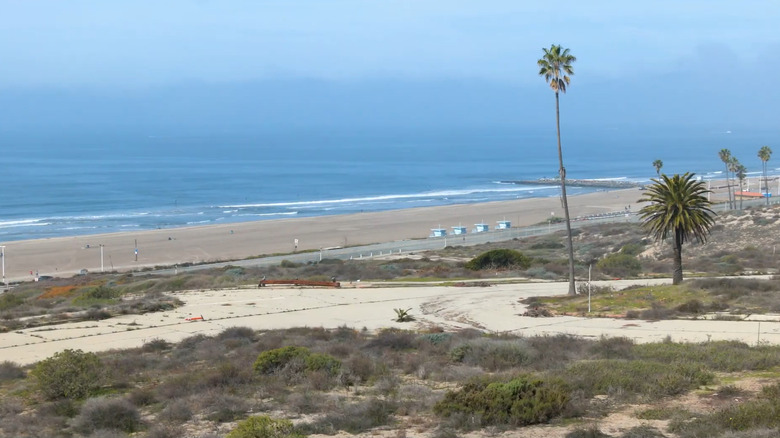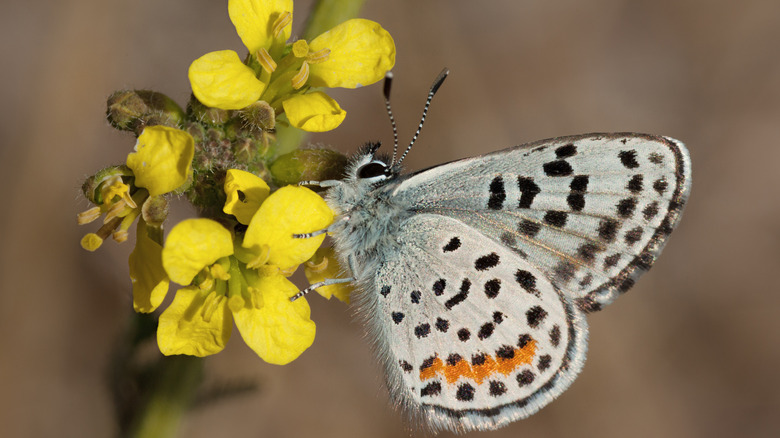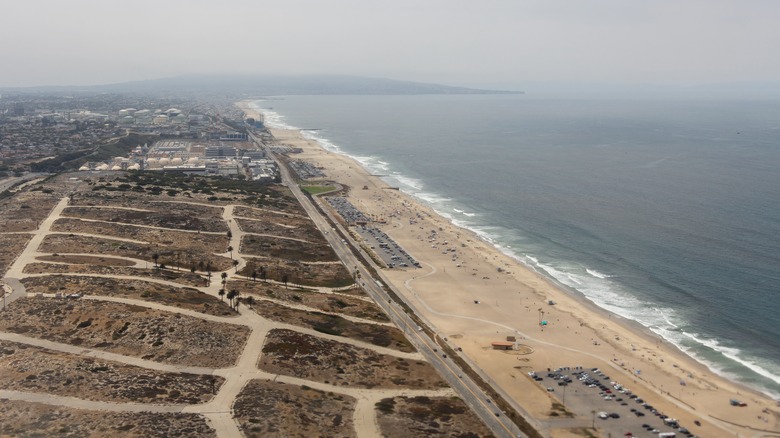
California is teeming with abandoned destinations. Near Joshua Tree National Park, there's Eagle Mountain, one of the Golden State's largest ghost towns. In the Mojave Desert, travelers can encounter Amboy on a surreal stretch of the Route 66 desert. And believe it or not, California's largest city, Los Angeles, is home to an eerie, long-deserted beachside neighborhood: Surfridge.
Once a bustling community, Surfridge sat adjacent to Los Angeles International Airport (LAX) on Vista Del Mar, a road
connecting Playa del Rey and Manhattan Beach. The neighborhood's origins date to the early 1920s, and in its heyday, it was a coastal paradise. Picture hundreds of impressive homes dotting hilly streets just feet away from the shore. Unsurprisingly, the neighborhood attracted high-profile figures, including filmmaker Cecil B. DeMille. Unfamiliar with the name? DeMille's achievements include establishing Paramount Pictures and directing the 1956 epic "The Ten Commandments." Put simply, Surfridge was, for a time, the epitome of Los Angeles luxury. But as the saying goes, all good things must end, and Surfridge's location ultimately sealed its fate. Before it became LAX, the site was Mines Field, later renamed Los Angeles Municipal Airport.
After World War II, the airport expanded into what is now LAX. This interfered with the quality of life of Surfridge residents, with the jet noise having become unbearable, and by the 1960s, it was decided that the neighborhood would be no more. Uninhabited since the 1970s, Surfridge is now owned by Los Angeles World Airports (LAWA).
Read more: The 5 Best Hidden Hot Spring Hikes In California
With The Demise Of Los Angeles' Surfridge Neighborhood, The El Segundo Blue Butterfly Flourished

Surfridge is not the only neighborhood in Los Angeles lost to LAX. Manchester Square, located just a few miles from Surfridge, was wiped off the map in the 2010s, as residents left due to aircraft noise. The former neighborhood was acquired by LAWA and is now the site of the LAX Rental Car Center, officially known as the Consolidated Rent-A-Car Facility. Surfridge, by contrast, remains undeveloped. Its homes were demolished after the area was vacated and the land — now surrounded by a fence — has been overtaken by vetegation and the s endangered El Segundo blue butterfly.
This tiny species is local to the region and as you can guess by its name, is recognizable by its distinct blue hue, visible only in males. Once on the brink of extinction, the species has rebounded in large part because Surfridge's abandonment preserved its habitat. Today, the site is known as the LAX Dunes, which includes the El Segundo Blue Butterfly Preserve. The species' endangered status has also prevented LAX from developing the land.
In turn, LAWA has worked and succeeded towards restoring the butterfly's population, as well as maintain the acreage's ecosystem. A crucial factor to its success? Seacliff Buckwheat, the plant that sustains the butterfly. The insects live only a few days, laying eggs on the buckwheat before dying. Although Surfridge could not be saved, the El Segundo blue butterfly was thankfully spared from the same fate.
Can You Explore Surfridge, Los Angeles's Abandoned Neighborhood?

Unfortunately for urban explorers, Surfridge, now known as the LAX Dunes, is off-limits. The land is owned by LAWA, and trespassing on the property is a criminal offense. Still, there is a way to step inside: Volunteer with LAWA. The agency periodically offers opportunities to help plant beneficial flora that allows the El Segundo blue butterfly and other fauna to thrive. But do keep in mind that the El Segundo blue butterfly is a summer insect. As such, volunteering events are usually held in the months leading up to that season. For details, check LAWA's calendar on their website.
For a view of Surfridge without breaking the law, you can always drive along Vista Del Mar. Park on the side of the road, stroll the sidewalk, and take a peak through the fence to see remnants of concrete streets surrounded by sprouting greenery. Check out Vista del Mar Park as well, a green space that once belonged to Surfridge. In the back, there is a fenced-off area providing additional views of the abandoned neighborhood.
Reviewers on Google note that the area is a memorable spot for plane spotting and sunsets. Directly across from Vista del Mar Park is Dockweiler, one of the only places in Los Angeles to legally have a beach bonfire. Alternatively, you could traverse the Waterview Trail in Playa del Rey. Located at Pershing Drive and Waterview Street, the short trail runs alongside Surfridge's fence through a residential area, offering a scenic look into the past — allowing you to imagine what Surfridge may have looked like if it still existed.
Ready to discover more hidden gems and expert travel tips? Subscribe to our free newsletter for access to the world's best-kept travel secrets.
Read the original article on Islands.















